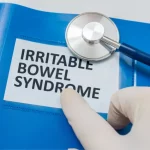
Image Source: FreePik
Oral cancer covers several types of disease along the neck and head regions. It comprises roughly 85 percent of the head and neck cancer group and includes the oral cavity, lips, pharynx, and nasopharynx as its main subsites.
A thorough check-up of the oral cavity is part of regular physical examinations. Checking this hollow part of the mouth is very useful in determining the state of a patient’s overall health and for detecting potential signs of oral cancer.
This article discusses the signs that may indicate the presence of oral cancer and the different forms of treatment available for patients diagnosed with the condition.
How to Recognize Signs of Oral Cancer
Patients with oral cancer stand a better chance of winning the fight against the condition with early detection. Unfortunately, in many cases, oral cancer is discovered only when it has already metastasized to the lymph nodes or any other location close by.
At this point, the prognosis is often worse than it would have been while it was still localized in the oral cavity. On top of that, the main cancer tumor would have already had time to take deep root into the local structures, making it difficult to treat.
Because of this, health authorities encourage regular oral check-ups to check the state of the mouth.
Another issue that may impede early care and treatment for this condition lies in the interpretation of symptoms. As it turns out, many early signs that indicate the presence of oral cancer has been mistaken to be caused by other issues like common colds or toothaches.
Below is a list of the symptoms that have been linked to oral cancer:
- Sore spots on the mouth or lips that don’t heal for a while
- Growth or mass located in any area of the mouth
- Mouth bleeding
- Loose teeth
- Difficulty or painful swallowing
- Issues in wearing dentures
- Neck lumps
- Pain in the ears that lingers
- Drastic loss of weight
- Numbness of the face, lower lip, chin, or neck
- Patches inside or on the mouth or lips that are colored red or white, or both
- Sore throat
- Stiffness or pain along the jaw
- Tongue pain
If any of these symptoms persist for a period of several weeks or months, it’s crucial to visit your physician. Your doctor would perform oral cancer screening and other tests to determine and diagnose what causes these symptoms to appear.
Oral Cancer Risk Factors
The likelihood of an oral cancer diagnosis increases depending on certain contributing factors. Taking these factors into consideration will help ascertain whether a patient can be diagnosed at an early stage of the condition.
- Age and Gender
In general, the risk of oral cancer has been found to increase as people grow older. It was found that the average age of people diagnosed with this illness is 62 years old. Even so, there are younger patients with the condition, but the number is significantly lower.
On the other hand, oral cancer is also discovered to be more likely to develop in men than women, but this may be linked to environmental risk factors such as alcohol drinking and tobacco use.
- Genetics and Environmental Factors
Some genetic mutations carry a higher risk of oral cancer, including Dyskeratosis congenital and Fanconi anemia. Individuals possessing these mutations are more likely to develop oral cancer at a younger age and also have a high chance of suffering from aplastic anemia.
As for the environmental factors, people who frequent tanning salons, work outdoors and have extended exposure to UV rays are more likely to develop lip cancers. Scientists also found evidence that following diets low in fruits and vegetables increased the risk of oral cancer, as well as drinking alcohol and use tobacco frequently.
3 Forms of Treatment for Oral Cancer
Oral cancer treatment varies per individual, depending on the location, type, and stage when the cancer was diagnosed. An oral cancer patient may seek a single form of treatment or any combination of the following:
1. Surgery
Oral surgery is the recommended treatment for people diagnosed with oral cancer during its early stages. This is because it involves removing the tumor and cancerous lymph nodes that come with it. Surgery is also effective in dealing with oral cancers that start from tissues inside or around the mouth and neck.
2. Targeted Therapy
Like surgery, targeted therapy is another type of cancer treatment that focuses on the affected area. It can be used for both advanced and early stages of cancer. It entails the use of drugs that bind with proteins that can only be found on cancer cells to impede their growth.
3. Chemotherapy
Chemotherapy makes use of medications that kill cancer cells and can be introduced to the body orally or via an intravenous line. This can be done with other treatments and taken on an outpatient basis, although some patients require hospitalization.
Early Detection: Better Than Long-Term Treatment
With oral cancer, early detection gives patients the highest survival rate as it means there would be time to remove the affected tissues. Make sure you care for your mouth as much as you would any part of your body by undergoing regular check-ups with your dentist or other oral care experts. (See also: A Definitive Case Study of Treatments Associated with Dentofacial Orthopedics)




